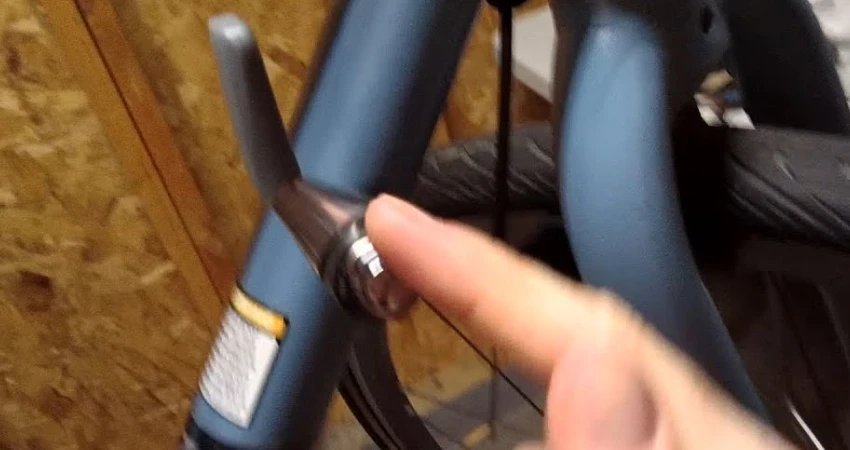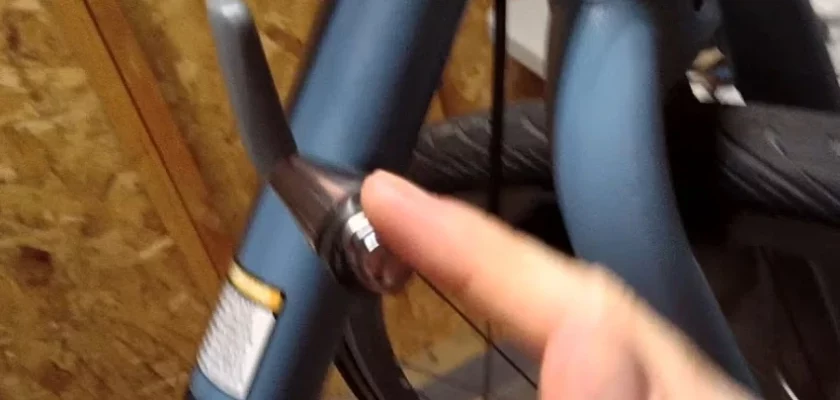Tired of struggling with your bike’s downtube shifters? Look no further! In this blog article, we’ll guide you through the simple steps to remove downtube shifters with ease. Whether you’re a seasoned cyclist or a newbie to bike maintenance, this handy guide will make the process a breeze.
Downtube shifters have been a staple in the cycling world for decades, but they can be a bit tricky to work with. Luckily, removing them doesn’t have to be a daunting task. By following our step-by-step instructions, you’ll soon be able to bid farewell to those clunky shifters and upgrade to a more modern shifting system.
So, if you’re ready to take your bike maintenance skills to the next level and learn how to remove downtube shifters, keep reading. We’ve got you covered!
Removing Downtube Shifters: A Step-By-Step Guide

Downtube shifters, also known as friction shifters, have been a staple on bicycles for many years. While they may have served their purpose in the past, modern advancements in bike technology have made them somewhat outdated. If you’re looking to upgrade your bike’s shifting system, removing downtube shifters is a necessary step.
Why Remove Downtube Shifters?
Before we dive into the removal process, it’s essential to understand why you might want to remove downtube shifters in the first place. Here are a few reasons why upgrading your bike’s shifting system can be beneficial:
1. Improved Performance: Downtube shifters require the rider to physically reach down and shift gears, taking their hands off the handlebars. Upgrading to a more modern shifting system, such as integrated shifters or bar-end shifters, allows for quicker and more precise gear changes, enhancing your overall cycling experience.
2. Convenience: With downtube shifters, you need to anticipate gear changes in advance and plan your shifts accordingly. Upgrading to a more modern system means you can shift gears on the fly, even in the midst of a challenging climb or a fast-paced descent.
3. Ergonomics: Downtube shifters can be uncomfortable to use, especially if you have to bend down to reach them. Modern shifter systems, such as those integrated into the brake levers or installed on the ends of handlebars, provide more ergonomic positioning for your hands, reducing strain and enhancing comfort.
Tools and Equipment You’ll Need
Before you begin the removal process, gather the following tools and equipment:
1. Hex wrenches or Allen keys: Needed to remove any bolts or fasteners securing the downtube shifters in place.
2. Screwdriver: May be required to remove any additional components or fasteners that are specific to your bike’s setup.
3. Cable cutters: Necessary if you plan on replacing the entire shifting system. Cable cutters will allow you to remove the cables cleanly.
4. New shifters: If you are upgrading your bike’s shifting system, make sure you have the new shifters ready to install after removing the downtube shifters.
Step-by-Step Guide to Removing Downtube Shifters
Now that you have your tools ready, let’s walk through the process of removing downtube shifters:
1. Start by shifting the chain onto the smallest chainring at the front and smallest rear cog. This relieves tension on the derailleur, making it easier to remove the shifters.
2. If your bike has cable housing that runs along the downtube, locate the anchor bolt near the derailleur. Loosen the bolt and pull the cable through the housing until it is completely detached from the downtube shifters. Set the cable aside.
3. Examine the downtube shifters and identify the bolts or fasteners holding them in place. Use the appropriate-sized hex wrench or Allen key to loosen and remove these bolts. Remember to keep track of any washers or spacers that may come off with the bolts.
4. Once the bolts are removed, carefully slide the downtube shifters off the mounting bosses. Be gentle to avoid scratching or damaging the frame.
5. If your bike had cable housing, you may need to remove any remaining cable guides or stops that were attached to the downtube shifters. These guides and stops are usually secured with small bolts or screws.
6. With the downtube shifters removed, take a moment to clean the mounting bosses and the surrounding area. Use a clean cloth or a mild degreaser to remove any dirt or residue.
7. If you are not planning to install new shifters immediately, insert plugs into the mounting bosses to prevent dirt and moisture from entering.
Congratulations! You have successfully removed your downtube shifters. Now, if you’re planning to upgrade your shifting system, let’s move on to the installation process.
Installing the New Shifting System
1. Start by unpacking your new shifters and familiarizing yourself with their components and instructions. Follow the manufacturer’s guidelines for installation, as the process may vary depending on the type of shifters you have chosen.
2. If you removed cable housing along with the downtube shifters, you will need to install new cable housing that matches the length of your bike’s frame. Thread the cables through the housing and make sure they are properly seated.
3. Next, attach the shifters to the mounting bosses on the downtube. Align them carefully and secure them in place using the bolts or fasteners provided. Use a torque wrench or a hex wrench to ensure they are tightened to the manufacturer’s recommended torque specifications.
4. If your new shifting system requires additional components, such as cable stops or guides, follow the manufacturer’s instructions for their installation. Make sure they are securely fastened before proceeding.
5. Once the shifters and any additional components are in place, route the cables through the cable housing and into the appropriate ports on the shifters. Follow the manufacturer’s instructions on how to properly thread the cables.
6. If you are unfamiliar with cable tension adjustment, it is recommended to have your bike serviced by a professional to ensure optimal performance. However, if you are comfortable with bike maintenance, you can refer to online tutorials or bike repair manuals for guidance on adjusting cable tension.
7. Finally, test the new shifting system by shifting through all the gears. Check if the chain smoothly transitions between gears and if there are any issues with shifting. If necessary, make minor adjustments to fine-tune the shifting performance.
With your new shifting system installed and properly adjusted, you’re now ready to hit the road with a more efficient and enjoyable cycling experience.
Frequently Asked Questions
1. How do I remove downtube shifters?
To remove downtube shifters, start by shifting the chain onto the largest chainring and smallest rear cog. Loosen the clamp bolt holding the shifter in place, then slide it off the downtube.
2. Can I remove downtube shifters without removing the chain?
Yes, you can remove downtube shifters without removing the chain. Simply shift the chain onto the largest chainring and smallest rear cog before loosening the clamp bolt and sliding the shifter off the downtube.
3. Do I need any special tools to remove downtube shifters?
Most downtube shifters can be removed using a 5mm Allen wrench or a small adjustable wrench to loosen the clamp bolt. No special tools are usually required.
4. Are downtube shifters compatible with all bike frames?
Downtube shifters are compatible with most traditional bike frames that have downtube shifter bosses. However, some modern frames may not have the necessary bosses, making downtube shifters incompatible.
5. Can I replace downtube shifters with other types of shifters?
Yes, downtube shifters can be replaced with other types of shifters such as integrated brake/shift levers or bar-end shifters. However, this may require additional modifications and parts to ensure compatibility and proper functioning.
Final Thoughts
To remove downtube shifters, follow these easy steps. Start by shifting your gears to the smallest chainring and the smallest cassette cog. Next, use a 5mm Allen key to loosen the bolt on the shifter boss.
Once the bolt is loose, carefully slide the shifter off the boss. Then, remove the cable from the shifter by loosening the cable pinch bolt. Finally, remove the shifter cable from the downtube by pulling it through the cable guide.
Removing downtube shifters is a simple process that can be done by any cyclist. By following these steps, you can easily remove and replace your downtube shifters as needed. So, whether you’re upgrading your bike or troubleshooting an issue, knowing how to remove downtube shifters is an essential skill for any cyclist.

